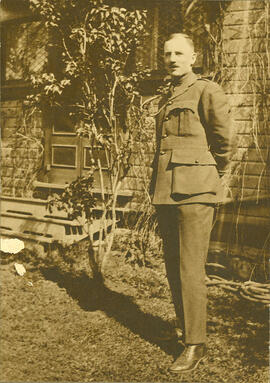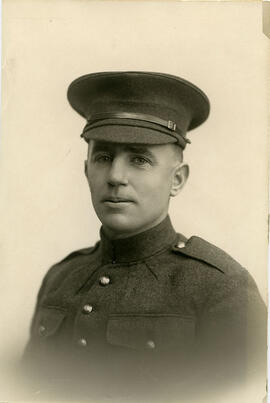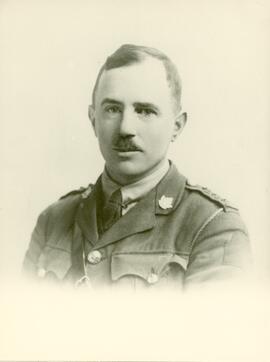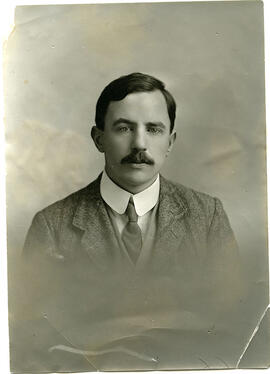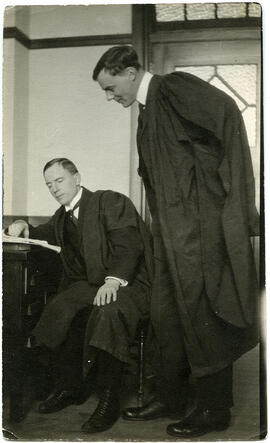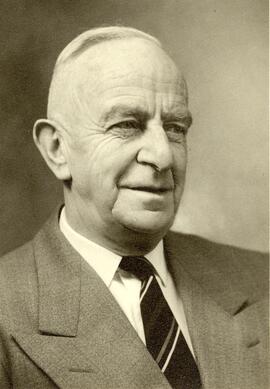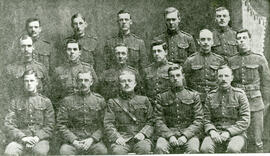Reginald J.G. Bateman - In Uniform
- A-2675
- Item
- [between 1914-1918]
Reginald J.G. Bateman, Professor of English, standing in the uniform of the [Canadian Expeditionary Force] in front of a building.
Bio/Historical Note: Reginald John Godfrey Bateman was born on 12 October 1883 in County Kerry, Ireland. He received his early education at Royal School, County Fermanagh, and both his BA (1906) and MA (1909) from Trinity College. Shortly after graduation in 1909 Bateman immigrated to Canada and was hired as Professor of English at the University of Saskatchewan. He enlisted as a private in the 28th Battalion, Canadian Expeditionary Force (CEF), in September 1914 and served in France. In early 1916 the idea of a Western University Battalion took root. Initially the Canadian military was reluctant, but the combination of a strong lobbying campaign and the need for fresh troops to replace the mounting casualties in Europe tipped the scales. Bateman was sent back to Canada to raise a company of the 196th (Western Universities) Battalion. The 196th was to consist of a company from each of the four western provinces. Once formed, it trained at Camp Hughes in Manitoba and was then sent to England. The 196th’s history was brief. Once in England it was broken up to reinforce existing units. A high portion of the recruits eventually found themselves in the officers’ ranks. Many found themselves assigned to the Saskatchewan-dominated 46th Battalion. Also known as the "Suicide Battalion," it fought in some of the bloodiest encounters of the war. Reinforcements were constantly needed as battle after battle decimated its ranks. Of the 5,374 men in the 46th Battalion, 4,917 were either killed or wounded. With the end of the war came demobilization and the end of the 46th Battalion. Reginald Bateman did not return. He was killed near Dury, France on 3 September 1918.



